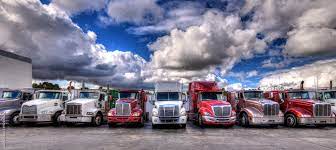warehousing and logistics are two vital components of the supply chain that work hand in hand to ensure the efficient movement of goods from manufacturers to consumers. Warehousing is the process of storing goods, while logistics focuses on the transportation and distribution of those goods. In this blog, we will explore the key aspects of warehousing and logistics, their interdependence, and best practices to optimize their performance.
Warehousing: The Foundation
Warehousing is more than just storage; it’s about optimizing space, ensuring product quality, and providing quick access to inventory when needed. Here are some key aspects:
- Storage Efficiency: Utilizing space effectively is crucial to maximize capacity. Implementing innovative storage solutions and rack systems can significantly enhance efficiency.
- Inventory Management: Organizing and categorizing inventory ensures quick retrieval and minimizes errors. Implementing digital inventory tracking systems improves accuracy.
- Quality Control: Warehouses should maintain the quality and integrity of products. This may involve temperature control, security measures, and regular inspections.
- Order Picking and Packing: Efficient order fulfillment is key to customer satisfaction. Streamlining picking and packing processes can reduce lead times and errors.
Logistics: The Movement
Logistics is all about the movement of goods from the manufacturer to the consumer. It encompasses transportation, distribution, and more:
- Transportation Management: Choosing the right transportation method, whether it’s trucking, rail, air, or sea, depends on factors like speed, cost, and the nature of the goods.
- Route Optimization: Utilizing technology to find the most efficient routes reduces fuel consumption and costs while improving delivery times.
- Last-Mile Delivery: The final step in the supply chain, delivering products to consumers, can be the most challenging. Innovative solutions like drones and autonomous vehicles are transforming last-mile logistics.
- Supply Chain Visibility: Real-time tracking and data analytics provide valuable insights into the status and performance of goods throughout their journey.
The Interdependence of Warehousing and Logistics
Effective warehousing and logistics are interdependent. A well-organized warehouse streamlines the logistics process, ensuring faster and error-free shipments. On the other hand, efficient logistics prevent overstocking in warehouses, reducing carrying costs.
For example, if a warehouse can quickly supply goods to a waiting truck, the truck can leave on time, reducing transit delays. Conversely, if the logistics team communicates effectively, the warehouse can prepare for incoming goods efficiently.
Best Practices for Success
To ensure the smooth operation of both warehousing and logistics, consider these best practices:
- Integration of Technology: Implementing warehouse and transportation management systems can enhance communication and streamline operations.
- Data Analytics: Utilize data to optimize routes, track performance, and predict future demand.
- Communication: Keep all parties informed about order status, potential delays, and inventory levels.
- Continuous Improvement: Regularly review and refine processes to eliminate inefficiencies.
Conclusion
In the world of modern commerce, the synergy between warehousing and logistics is crucial for success. Efficient warehousing ensures goods are readily available, while effective logistics gets them to their destination in a timely and cost-effective manner. By understanding the interdependence of these two critical elements and implementing best practices, businesses can meet customer demands and stay competitive in the global market. Warehousing and logistics are not just supporting functions; they are the backbone of a well-oiled supply chain.
